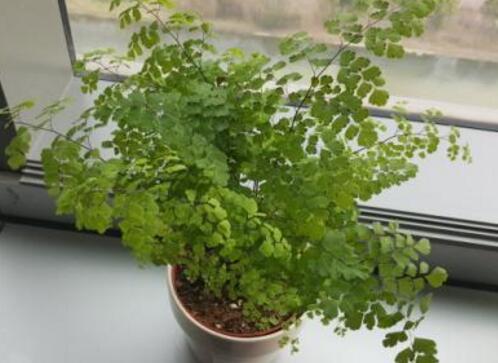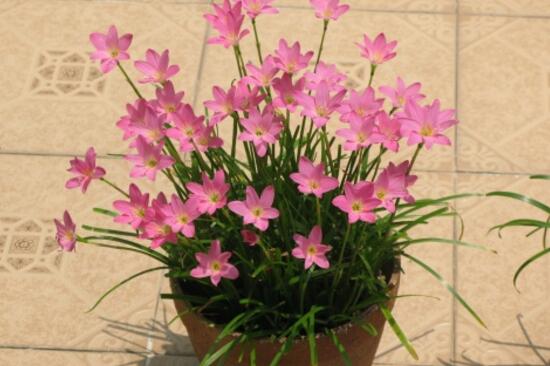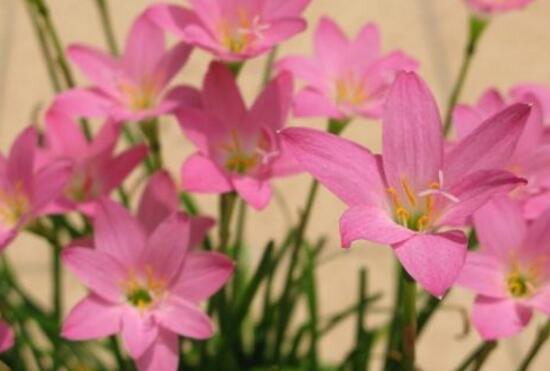What to do about the yellowing of fern leaves? five techniques to improve yellowing / including coping methods
Dryopteris is a common indoor foliage plant, because it is simple and adaptable to cultivation, but in conservation and management, some flower friends encounter the phenomenon of yellowing leaves, which not only cannot be seen as an ornamental fern, but may also cause the whole plant to wither and even die, which is very distressing to flower friends. What about the yellowing leaves of Dryopteris? The editor summarizes five reasons and countermeasures according to the experience of Hua you.
What if the leaves of Dryopteris fern turn yellow?

From the breeding experience of flower friends, the main reasons for the yellowing of Dryopteris leaves are: overwatering, lack of light, soil discomfort, excessive fertilization, diseases and insect pests. We will understand in detail from these five aspects.
1. Overwatering
In the culture method of Dryopteris, we know that it is more resistant to humid environment, but overwatering will cause the roots of Dryopteris to be unable to contact the outside air, which restricts its respiration, thus affecting the growth and development of the roots. causes the young leaves to turn yellowish, and then the old leaves turn yellow and fall off.
Countermeasures: there must be no stagnant water when watering, the specific method can refer to the detailed introduction of how to water the fern, in addition, each watering should observe whether there is water flowing out from the drainage hole at the bottom, if the stagnant water can not be discharged in time, it shows that there are problems in soil drainage, and it is necessary to turn the soil or change the basin in time.
Second, lack of light
The most suitable light condition for Dryopteris is bright light but not strong light, so some flower friends will put it indoors to breed it. As a result, they do not pay attention to the change of light and put it in places with weak light, such as bathrooms, storage rooms, and so on. It makes its leaves yellow because of lack of light.
How to deal with it: what to do about the yellowing of fern leaves caused by lack of light? The answer is to increase light. It is best not to put Dryopteris in a very weak light environment. If there is not enough light at home, you can use light to make up the light. Make sure that Dryopteris can enjoy about 6 hours of light every day.
Third, soil discomfort
Most plants prefer neutral or slightly acidic soil, and Dryopteris is no exception. If the soil used in breeding is too alkaline, or the water quality is too alkaline when watering, the leaves of Dryopteris will fade and the leaf edges will turn yellow over time, because the soil will lack iron.
Countermeasures: acid soil should be the best, loam, rotten leaf soil, river sand can be mixed, the water quality can not be alkaline when watering, you can pour some alum fertilizer water to adjust the PH value of the soil.
IV. Excessive fertilization
The demand for fertilizer for Dryopteris is relatively low. During the peak growth period, it is OK to apply thin liquid fertilizer once a month. If too much fertilizer is applied, the tips of the old leaves will be scorched yellow, the new leaves will be thickened, and the elegant leaves will become less beautiful.
Countermeasures: if you have applied too much fertilizer, you need to increase the amount of water to let the excess fertilizer flow out of the drain hole with water, and then you should pay attention to reasonable fertilization, and the concentration of fertilizer should not be too high each time.
5. Diseases and insect pests
Although the probability of the occurrence of diseases and insect pests is not high, it does lead to one of the common reasons for the yellowing of fern leaves. Because many flower friends do not know much about diseases and insect pests, they often think that the leaves are yellowed due to improper breeding methods. So when looking for the cause, we must pay attention to observe whether there are disease spots or honeydew on the leaves.
Countermeasures: usually to strengthen maintenance and management to reduce the probability of diseases and insect pests, disinfect the soil and roots when planting, if there are diseases and insect pests need to spray drugs for control, commonly used drugs are carbendazim, malathion and so on.
What if the leaves of Dryopteris fern turn yellow?
The yellowing light of the leaves of Dryopteris is too strong.
Excessive light will cause the leaves of Dryopteris to turn yellow, because Dryopteris can grow in a semi-shady environment, and if the strong sunlight is in direct light, it can easily lead to scorched or even yellowed leaves.
Therefore, when raising Dryopteris, we must pay attention to shading and maintain the half-load indoor half-shaded place of the fern plant under the condition of sufficient light.
The yellowing leaves of Dryopteris przewalskii are underwatered.
Underwatering can sometimes cause the leaves of Dryopteris to turn yellow, because Dryopteris needs plenty of water when it grows, and it is best to maintain high air humidity. If there is not enough water, or the air is relatively dry, the leaves will be scorched and curled or yellow.
During the vigorous growth of Dryopteris, watering is very important, and sometimes it is necessary to spray water on the branches and leaves. Improper fertilization of yellowing leaves of Dryopteris
Improper fertilization will lead to the yellowing of the leaves of Dryopteris, which mainly refers to the improper operation of Dryopteris during fertilization, resulting in pollution and yellowing of the leaves, affecting the ornamental.
When applying fertilizer, it is generally possible to apply fertilizer once at a time, because the demand for fertilizer for Dryopteris is not high, so fertilization is mainly thin fertilizer. When fertilizing, be careful not to touch the leaves.
The leaves of Dryopteris fern are yellowing and the soil is uncomfortable.
The soil is not suitable to lead to the yellowing of the fern leaves, because the new century is growing faster, it is best to change the basin every day, the choice of soil must be in line with the growth habits of Dryopteris, otherwise it will lead to leaf yellowing. Therefore, when raising Dryopteris, we can choose the mixed soil of garden soil, rotten leaf soil, river sand and so on.
Improper pruning of yellowing leaves of Dryopteris
Dryopteris needs timely pruning in the process of maintenance, once it is found that withered leaves should be cut off in time, which is conducive to the growth of the plant, and it will not be too messy, otherwise it will grow weak and the leaves will turn yellow.
When raising Dryopteris, it is best to prune when the branches and leaves are dense every year, and cut off the old leaves properly in autumn.
How to deal with the yellowing of the leaves of Dryopteris Dryopteris?
Dryopteris has strong adaptability, easy cultivation, suitable for indoor perennial potted plants, is one of the most common green plants at home, the plant type is beautiful and beautiful, elegant and elegant, and the ornamental value is extremely high. but many people often encounter the problem of yellowing of Dryopteris leaves when cultivating Dryopteris. Here are the reasons for the yellowing of Dryopteris leaves and how to deal with them.
What to do if the leaves of Dryopteris are yellowed? 1. Excessive light causes the leaves of Dryopteris to turn yellow.
Reason: Dryopteris is a shade plant, if the strong sunlight can easily cause the leaf edge scorched, leaves withered and yellow. Solution: outdoor training should pay attention to shade, but also need to provide sufficient sunlight to grow, in indoor, it is best to put the flowerpot on the east or north windowsill of the room for maintenance.
2. Insufficient watering leads to the yellowing of the leaves of Dryopteris.
Reason: during the growth of Dryopteris, it is necessary to fully water and maintain high air humidity to keep the leaves dark green. If the water supply is insufficient or the air is dry, the leaves will turn yellow or curl scorched. Solution: Dryopteris should spray water on the branches and leaves 2 or 3 times a day during the peak growing season.
3. Improper fertilization leads to yellowing of Dryopteris leaves.
The reason: the improper watering and fertilization of Dryopteris will stain the leaves, resulting in the withering and yellowing of the leaves and affecting the ornamental effect.
Solution: Dryopteris does not need much fertilizer, generally apply thin pancake fertilizer and water every 2 to 3 weeks, if a small amount of calcareous fertilizer can be added, the effect is better.
4. The leaves of Dryopteris fern are yellowed due to soil discomfort.
The reason: Dryopteris grows fast and needs to be changed every spring. Dryopteris likes loose, permeable and fertile calcareous sandy loam, and attention should be paid to the choice of soil if the soil does not conform to the growth habits of Dryopteris. It is easy to lead to poor growth of Dryopteris and the leaves begin to yellowing and falling.
Solution: pot culture soil can be mixed with loam, rotten leaf soil and river sand in the same amount.
5. Improper pruning leads to yellowing of Dryopteris leaves.
Reason: when withered leaves are found in the maintenance process, Dryopteris should be cut off in time to keep the plant fresh and beautiful, and conducive to the germination of new leaves, otherwise the branches and leaves are too cluttered and crowded, it will lead to growth weakness and leaves yellowing.
Solution: when the clump of fern leaves is too dense, the old leaves can be pruned properly every autumn.
6. The dense foliage leads to the yellowing of the leaves of Dryopteris.
The branches and leaves are too crowded. It will lead to poor ventilation and light transmission, weak growth and yellowing of leaves. Some of the old leaves should be removed every autumn and turned over in spring and autumn. This is not only conducive to the beauty of plant shape, but also conducive to the germination of new leaves.
- Prev

Leek lotus leaves withered and yellow how to do, pay attention to 4: 00 yellowing worry / control water and fertilizer is the key
The beauty of leek lotus lies in its perfect match of flowers and leaves: green leaves, accompanied by pink flowers, look dazzling and very likable. But in the process of breeding, many flower friends will encounter the phenomenon of withered and yellow leaves, seriously affecting the ornamental nature of leek lotus, what about the withered and yellow leaves of leek lotus? To this
- Next

What if the leek lotus does not blossom? adjusting the temperature and increasing light / proper fertilization is the key.
The efficacy of leek lotus is mostly reflected in its ornamental, while its ornamental is mainly reflected in the beautiful flowers. So once the leek lotus does not blossom, it will seriously affect its ornamental value, and then the flower friends must be in a hurry! What if the leek lotus does not blossom? In this regard, the editor summarized three reasons.
Related
- Fuxing push coffee new agricultural production and marketing class: lack of small-scale processing plants
- Jujube rice field leisure farm deep ploughing Yilan for five years to create a space for organic food and play
- Nongyu Farm-A trial of organic papaya for brave women with advanced technology
- Four points for attention in the prevention and control of diseases and insect pests of edible fungi
- How to add nutrient solution to Edible Fungi
- Is there any good way to control edible fungus mites?
- Open Inoculation Technology of Edible Fungi
- Is there any clever way to use fertilizer for edible fungus in winter?
- What agents are used to kill the pathogens of edible fungi in the mushroom shed?
- Rapid drying of Edible Fungi

